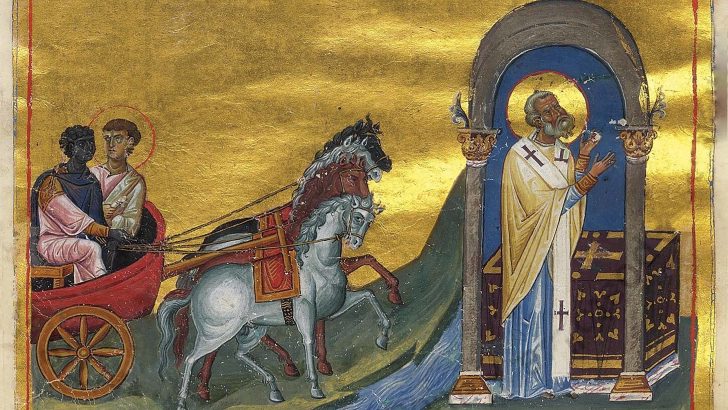Whistlestop Tales: Around the World in 10 Bible Stories
by Krish Kandiah and Miriam Kandiah (Hodder Faith / Young Explorers series, £10.99 / €12.99)
This well-intentioned book for younger readers highlights an increasing problem in today’s culture. With the disappearance of the classics (Greek and Roman) from the curriculum, and the ever-narrowing perspectives of history being taught, young people in the several nations of these islands and North America, have been deprived of any deep continuous contacts and intimacy with cultures outside their own.
This was not the intention of advanced educationists. But they thought by only making what was learnt “relevant” to the children’s own culture, they could keep their attention.
The result can easily be seen around us. Nothing is really known of the past, and what is known of the present is superficial and trimmed to be unoffensive. We live in the age of Horrid Histories, which are written by an author whose avowed intention is to destroy education and school. We come every day perilously closer to the appearance of a title like ‘Fun Facts about Slavery’.
How, in this sort of environment, are children to be taught about the ancient cultures of Asia, the Middle East and ancient Europe through which our knowledge of the origins and traditions of monotheistic religion have been filtered?
Problem
This problem came into focus for me with this book. Krish Kandiah is an accomplished author with many popular, indeed best-selling books to his credit. He and his wife Miriam have between them created some fourteen titles.
Whistlestop Tales contains ten stories, or rather episodes, from the scriptures, which have been restyled. One is the story of the Ethiopian eunuch encountered by the Apostle Philip (Acts 8). This is summarised as “An ancient mystery unlocked by a senator from the Sudan”.
Now this all very misleading. What a eunuch might be is of course difficult to explain to an immature readership. But Ethiopia and Sudan are not the same place. The man was not a member of the Roman Senate, or indeed any assembly. He was a man “of great authority under Candace, the Queen of the Ethiopians, who had charge over all her treasures, [who] had come to Jerusalem”. This all connects with the legend of Solomon and the Queen of Sheba. The Eunuch brought the ‘Good News’ to Ethiopia and so is seen as one of the founders of the Ethiopian Coptic Church. It has been suggested to me by someone familiar with the culture that the Ethiopian Copts would find making him Sudanese deeply offensive, being a denial of his true culture.
Children should never be misled about the facts of history. By making him a Senator and Sudanese (that is Bantu rather than Hamitic in the old terminology) an idea is created which does not align with the historical truth.
Fears
I have the same fears over other episodes. Equally concerning is the use of the names of modern places and cultures to absorb the past. The culture and people of modern Iraq are not the people of Mesopotamia in ancient times. The modern Italians are not the same people as the ancient Romans (art alone reveals this). Too many other groups and cultures have invaded and settled in the peninsula for that to be the case. The device is smart rather than clever. Here is yet more information which will have to be unlearned later.
The authors and their publishers are well intentioned. But I have very grave reservations about the resulting book.
Smart up-to-date styling suitable for British and US readers comes close to rewriting history.
Am I making too much of this? I think not. The whole scheme needs rethinking. But I suppose the die is cast, the books are printed and are in the shops, and it is far too late for that. Still for Krish Kandiah, an energetic creator of books, there will always be another time.
The immediate inspiration of this book is important. Kris Kandiah found other races and other cultures (which is a far more important the issue that skin colour) were represented very confusing in the books he had available to read when he was a small boy. This initial idea is well worth revisiting in another way.


 Peter Costello
Peter Costello Ethiopian Eunuch
Ethiopian Eunuch 